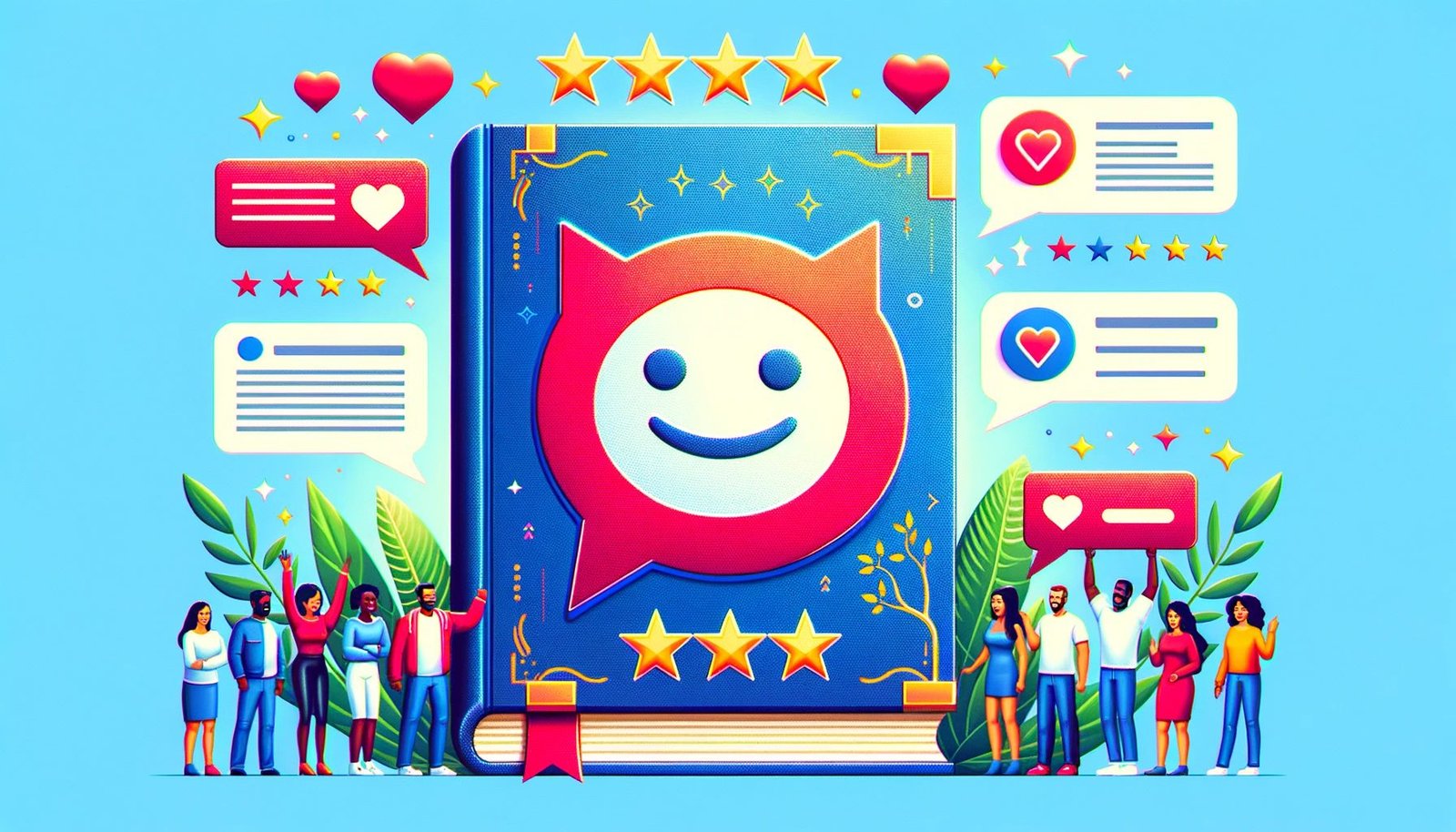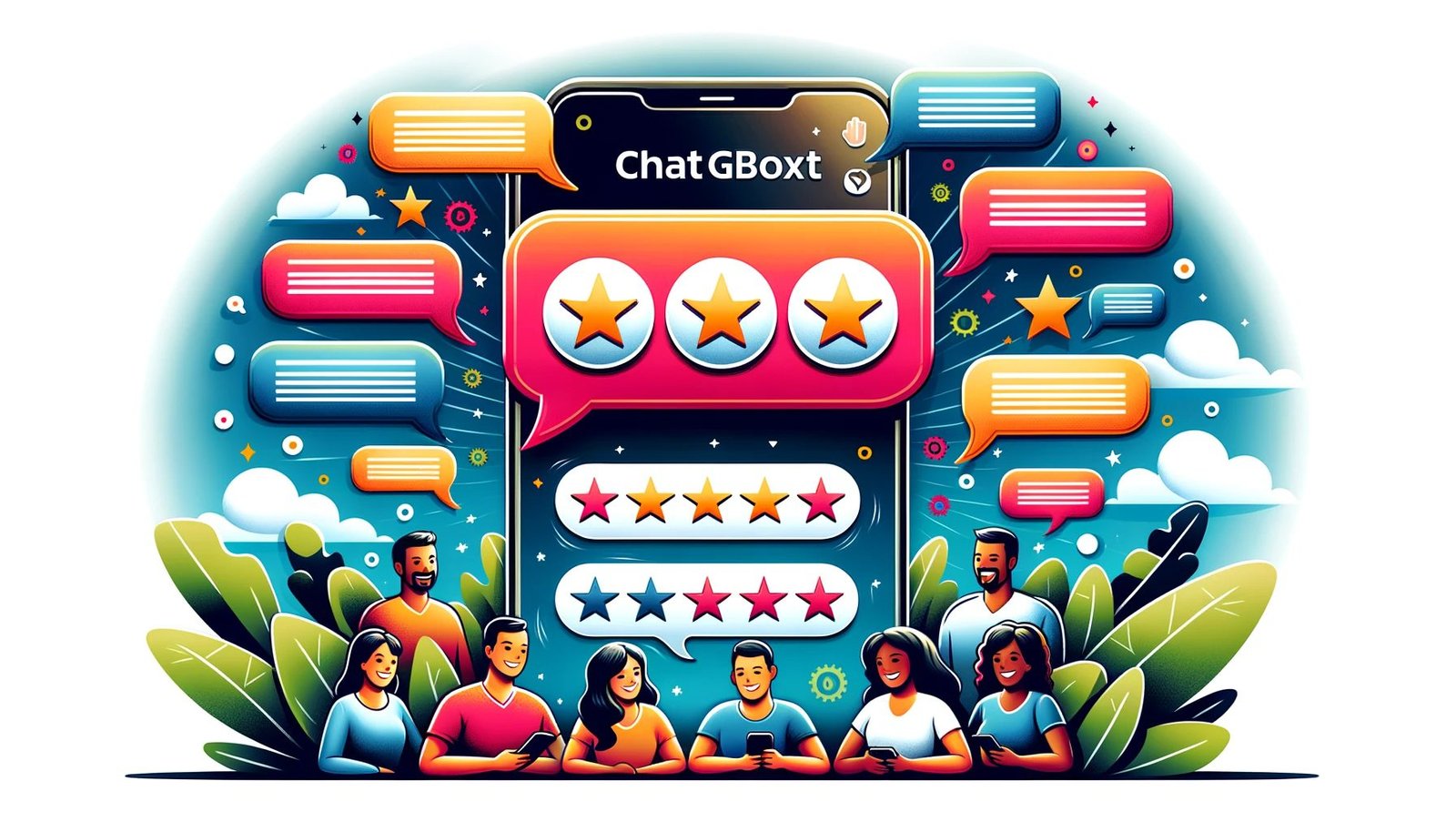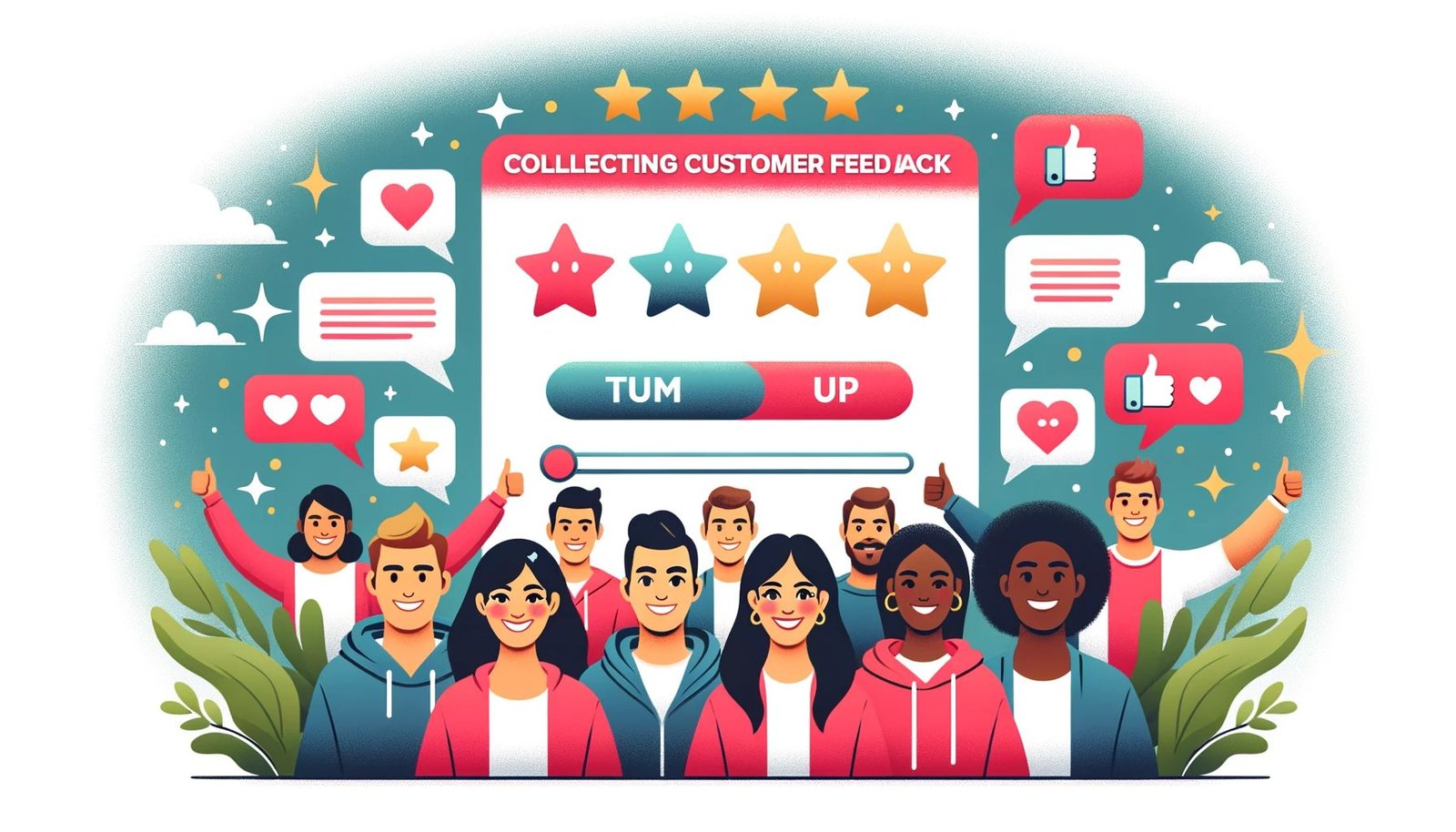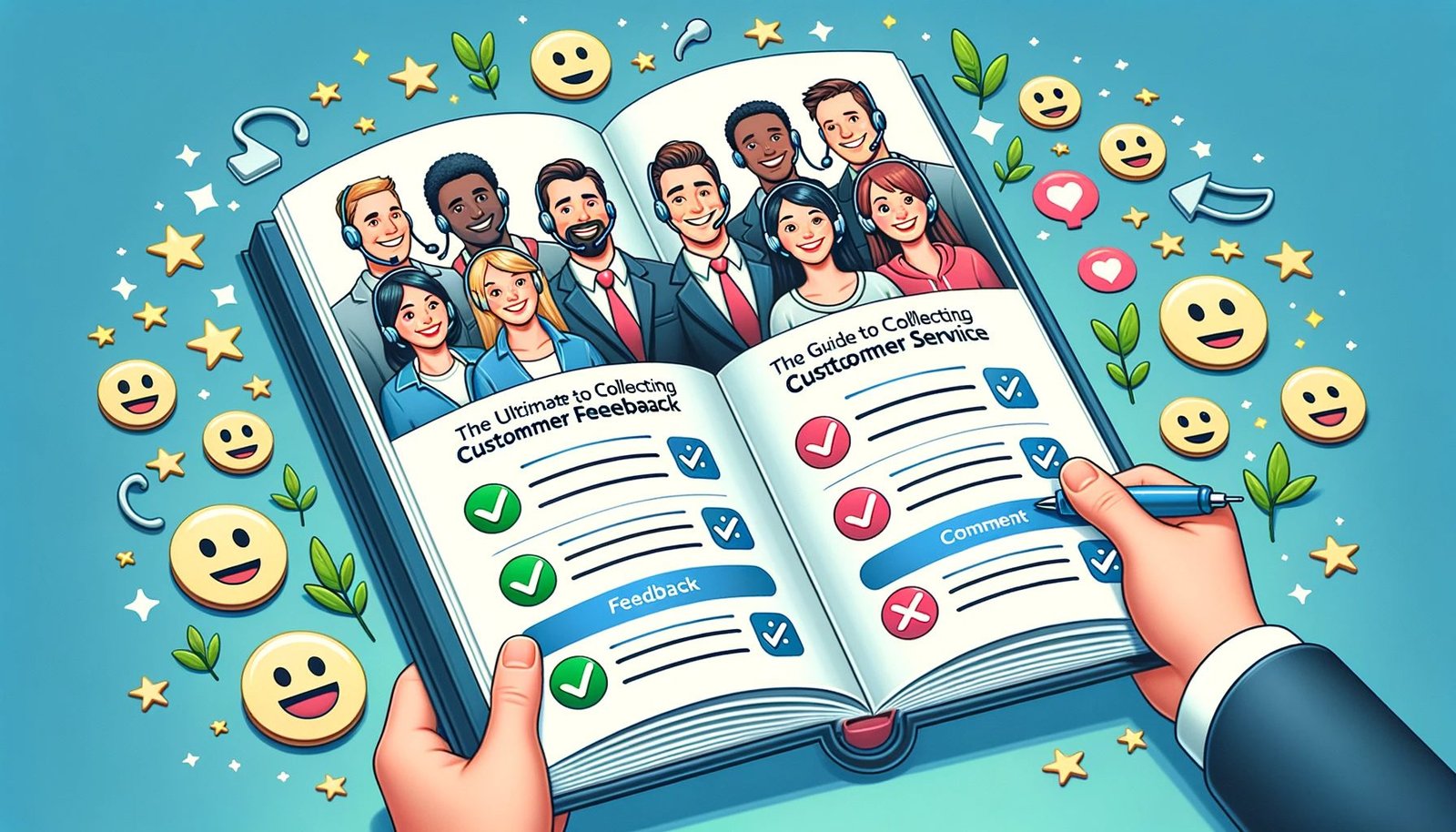The Ultimate Guide to Collecting Customer Feedback on ChatGPT Customer Service
The Ultimate Guide to Collecting Customer Feedback on ChatGPT Customer Service
Introduction – Customer Feedback on ChatGPT Customer Service
In today’s digital age, customer feedback plays a pivotal role in shaping the trajectory of AI-driven customer service. As businesses increasingly rely on artificial intelligence to enhance their customer interactions, understanding user experiences becomes paramount. One such AI tool that has garnered attention in the customer service domain is ChatGPT. This article will delve into the significance of collecting feedback on ChatGPT Customer Service and provide a comprehensive guide on how to do it effectively.
The Importance of Customer Feedback in Shaping AI-Driven Customer Service
Customer feedback is the cornerstone of any successful business strategy, especially when it comes to AI-driven customer service. It offers invaluable insights into what’s working, what’s not, and where improvements are needed. By listening to customers, businesses can tailor their AI tools to better meet user expectations, ensuring a seamless and efficient customer experience.
For AI tools like ChatGPT, feedback is even more crucial. It helps in refining algorithms, enhancing accuracy, and ensuring that the AI understands and responds to user queries in the most effective manner. Moreover, in an era where WordPress web development for customer service is gaining traction, integrating AI tools that have been refined based on customer feedback can significantly boost website user experience.
Introducing the Focus: Collecting Feedback on ChatGPT Customer Service
ChatGPT, with its advanced natural language processing capabilities, has revolutionized customer service. But how do businesses ensure that it’s meeting their customer’s needs? The answer lies in effective feedback collection.
Collecting feedback on ChatGPT Customer Service is not just about understanding its efficiency. It’s about understanding the nuances of customer interactions, gauging their satisfaction levels, and identifying areas of improvement. As we navigate through this guide, we’ll explore the best practices and strategies to collect, analyze, and implement feedback for ChatGPT Customer Service.

The Ultimate Guide to Collecting Customer Feedback on ChatGPT Customer Service
In the realm of AI-driven customer service, understanding user experiences and expectations is paramount. ChatGPT, being at the forefront of this revolution, offers businesses a unique opportunity to enhance customer interactions. But how can businesses ensure that ChatGPT is meeting its potential? The answer lies in effective feedback collection. Let’s delve deeper into the intricacies of collecting feedback for ChatGPT Customer Service.
a. Why Feedback Matters: The Role of Feedback in Refining AI Interactions
Feedback isn’t just a tool for measuring satisfaction; it’s a goldmine of insights that can drive the evolution of AI-driven customer service. For platforms like ChatGPT, feedback plays several crucial roles:
- Identifying Gaps: No AI is perfect. Feedback helps in pinpointing areas where ChatGPT might be falling short, be it in understanding certain queries or providing accurate responses.
- Training the AI: ChatGPT learns from interactions. By integrating feedback, businesses can train the AI to better understand and cater to user needs, enhancing its WordPress web development for customer service.
- Measuring Success: Feedback provides a tangible metric to measure the success of ChatGPT in customer service roles. It helps businesses gauge whether the AI is meeting its objectives and delivering a satisfactory user experience.
b. Tools and Platforms: Best Tools to Gather Feedback Effectively
Collecting feedback is an art, and having the right tools can make all the difference. Here are some of the best tools and platforms to gather feedback on ChatGPT Customer Service:
- Surveys: Tools like SurveyMonkey or Google Forms can be integrated post-interaction to gather detailed feedback.
- Live Chat Feedback: At the end of a ChatGPT session, prompt users to rate their experience. This immediate feedback can be invaluable.
- Feedback Widgets: Tools like Fiverr’s feedback system can be embedded on your website, allowing users to provide feedback anytime they interact with ChatGPT.
- Analytics Platforms: Tools like Google Analytics can provide insights into user behavior, helping businesses understand where users might be facing issues with ChatGPT.
c. Timing is Everything: When to Ask for Feedback for Optimal Responses
The timing of feedback collection can significantly influence the quality and quantity of responses. Here are some best practices:
- Post-Interaction: Immediately after a user interacts with ChatGPT is an optimal time to ask for feedback. Their experience is fresh, and they’re more likely to provide detailed insights.
- Periodic Surveys: Sending out periodic feedback surveys can help in gathering insights over a more extended period, helping identify long-term trends and issues.
- After Updates: If you’ve made changes to ChatGPT based on previous feedback, it’s a good idea to gather feedback again to see if the changes are effective.
By understanding the importance of feedback, leveraging the right tools, and timing your feedback collection effectively, businesses can ensure that ChatGPT Customer Service is always at its best, meeting user needs and expectations.
ChatGPT Customer Service Best Practices
In the rapidly evolving world of AI-driven customer service, ChatGPT stands out as a powerful tool for businesses. However, to harness its full potential, it’s essential to follow some best practices. These practices not only ensure optimal user experience but also help in refining and enhancing the AI’s capabilities over time. Let’s explore some of these best practices in detail.
a. Setting Clear Expectations: Letting Customers Know What to Expect from ChatGPT
Transparency is key to building trust. When customers interact with ChatGPT, they should have a clear understanding of its capabilities and limitations. Here’s how to set the stage:
- Initial Greeting: Start with a friendly greeting that also informs the user they’re interacting with an AI. For instance, “Hello! I’m ChatGPT, an AI assistant. How can I assist you today?”
- Capability Overview: Provide a brief overview or a list of tasks that ChatGPT can handle. This can be presented as a menu or a set of prompts.
- Limitation Acknowledgment: It’s okay to let users know that while ChatGPT is powerful, it might not have all the answers. Encourage them to provide feedback or seek human assistance if needed.
b. Active Listening: How ChatGPT Can Be Trained to Listen and Adapt
For any customer service tool, listening is crucial. For ChatGPT, this means understanding user queries and responding appropriately.
- Feedback Loop: Integrate a system where users can provide feedback on ChatGPT’s responses. This helps in refining its understanding over time.
- Contextual Understanding: Train ChatGPT to recognize context, not just keywords. This ensures more accurate and relevant responses.
- Prompt Clarification: If ChatGPT doesn’t understand a query, it should ask for clarification rather than providing a potentially incorrect answer.
c. Continuous Improvement: Regularly Updating ChatGPT Based on Feedback
The world of AI is ever-evolving, and so should ChatGPT’s capabilities.
- Feedback Analysis: Regularly analyze the feedback received to identify common issues or areas of improvement.
- Version Updates: As ChatGPT evolves, ensure you’re using the latest version with all the new features and improvements.
- Training Sessions: Periodically retrain ChatGPT using fresh data and feedback to improve its accuracy and relevance.
By following these best practices, businesses can ensure that ChatGPT Customer Service not only meets but exceeds customer expectations, leading to enhanced user satisfaction and loyalty.
5 Ways to Get Valuable Customer Feedback on Your ChatGPT Customer Service
In today’s digital age, customer feedback is gold. It provides businesses with insights that can drive improvements, enhance user experience, and foster loyalty. When it comes to AI-driven customer service tools like ChatGPT, feedback is even more crucial. It helps refine the AI, making it more efficient and user-friendly. Here are five effective methods to gather valuable feedback on your ChatGPT Customer Service.
a. Surveys and Questionnaires: Crafting Effective Questions
Surveys are a tried-and-true method to gather feedback. But the key lies in asking the right questions.
- Rating Scales: Use scales (e.g., 1-5 or 1-10) to gauge customer satisfaction levels with ChatGPT interactions.
- Open-ended Questions: Allow users to express their thoughts freely. Questions like “What improvements would you suggest for our AI chatbot?” can provide invaluable insights.
- Frequency: Periodically send out these surveys, post-interaction or as part of a newsletter, to gather continuous feedback.
b. Feedback Forms: Integrating Forms Post-interaction
Immediately after a ChatGPT interaction, prompt users to fill out a quick feedback form.
- Ease of Use: Ensure the form is concise and user-friendly.
- Specific Queries: Ask about the accuracy of ChatGPT’s responses, speed of interaction, and overall satisfaction.
- Improvement Suggestions: Include a section where users can suggest features or changes.
c. Social Media Monitoring: Tracking Mentions and Feedback Online
In the age of social media, customers often voice their opinions online. Monitor platforms like Twitter, Facebook, and LinkedIn for mentions.
- Alerts: Set up notifications for mentions of your brand and ChatGPT to stay updated.
- Engage: Respond to feedback, both positive and negative, to show customers you value their input.
- Analyze Trends: Use tools to analyze common feedback themes or recurring issues.
d. Direct Interviews: Engaging with Customers for In-depth Insights
Sometimes, the best feedback comes from direct conversations.
- Selection: Choose a diverse set of customers who’ve interacted with ChatGPT.
- Structured Questions: While maintaining a conversational tone, have a set of questions to guide the interview.
- Incentivize: Offer discounts or other incentives to encourage participation.
e. Analyzing Chat Logs: Gleaning Feedback from Direct Interactions
Every ChatGPT interaction leaves behind a log. These logs are treasure troves of feedback.
- Review Regularly: Periodically review chat logs to understand common customer queries or issues.
- Feedback Indicators: Look for phrases like “I don’t understand” or “That’s not what I asked” as indicators of areas needing improvement.
- Update Training Data: Use feedback from chat logs to retrain and refine ChatGPT.
By employing these methods, businesses can gather a wealth of feedback, ensuring that their ChatGPT Customer Service is always at the top of its game, meeting and exceeding customer expectations.

How to Use Customer Feedback to Improve Your ChatGPT Customer Service
In the realm of AI-driven customer service, continuous improvement is the name of the game. Feedback from users is a goldmine of insights that can help refine and enhance the ChatGPT experience. But how do you effectively leverage this feedback? Here’s a step-by-step guide.
a. Identifying Common Themes: Spotting Recurring Issues or Praises
Before diving into individual feedback, it’s essential to look at the bigger picture.
- Feedback Aggregation: Use tools or software to aggregate all feedback. This could be from surveys, social media, chat logs, or direct interviews.
- Categorization: Categorize feedback into broad themes like “accuracy of responses,” “speed of interaction,” or “system errors.”
- Spot Patterns: Look for recurring issues or praises. For instance, if multiple users mention that ChatGPT doesn’t understand a specific query, that’s a clear area of improvement.
b. Prioritizing Feedback: Deciding What to Address First
Not all feedback is created equal. Some might have a more significant impact on user experience than others.
- Urgency and Impact: Feedback that points to major system errors or inaccuracies should be prioritized. Similarly, feedback that can enhance the user experience for a large portion of users should be high on the list.
- Feasibility: While all feedback is valuable, some changes might be more feasible to implement than others. Balance the urgency of feedback with the practicality of implementing it.
c. Implementing Changes: Adjusting ChatGPT’s Responses and Behavior
Once you’ve identified and prioritized feedback, it’s time to roll up your sleeves and make changes.
- Retraining the Model: Use the feedback to retrain ChatGPT, especially if there are accuracy or understanding issues.
- Adjusting Parameters: Sometimes, the solution might be as simple as adjusting certain parameters or settings in the ChatGPT system.
- Testing: Before rolling out changes to all users, test them in a controlled environment. Ensure that the adjustments have the desired effect and don’t introduce new issues.
d. Communicating Improvements: Letting Customers Know Their Feedback Was Heard
Transparency is key. Once you’ve made improvements based on feedback, let your users know.
- Update Announcements: Use newsletters, in-app notifications, or your website to announce updates or changes made based on feedback.
- Acknowledgment: Thank users for their feedback. It not only fosters goodwill but also encourages more users to provide feedback in the future.
- Feedback Loop: Encourage users to give feedback on the changes. This creates a continuous loop of improvement.
By actively collecting, analyzing, and acting on customer feedback, businesses can ensure that their ChatGPT Customer Service remains top-notch, continually evolving to meet and exceed user expectations.
ChatGPT Customer Service Best Practices: The Secret Weapon
In the rapidly evolving world of AI-driven customer service, staying ahead of the curve is crucial. ChatGPT, with its advanced capabilities, offers businesses a unique advantage. But to truly harness its power, it’s essential to follow some best practices. Here’s a deep dive into three secret weapons that can elevate your ChatGPT Customer Service experience.
a. Personalization: Tailoring Responses Based on User History
One of the standout features of AI-driven customer service is the ability to offer personalized experiences.
- User Profiles: Create user profiles that store interaction history. This allows ChatGPT to understand past queries, preferences, and issues, tailoring its responses accordingly.
- Contextual Understanding: Ensure that ChatGPT can understand the context behind queries. For instance, if a user previously inquired about a product’s warranty and now asks about repairs, ChatGPT should be able to connect the dots.
- Recommendations: Based on user history, ChatGPT can also offer personalized product or service recommendations, enhancing the user experience and potentially driving sales.
b. Proactive Feedback Collection: Asking for Feedback During Interactions
Instead of waiting for users to provide feedback, be proactive.
- In-Chat Surveys: At the end of interactions, prompt users with a quick survey. Ask about the accuracy of responses, speed of service, and overall satisfaction.
- Feedback Triggers: If ChatGPT detects certain keywords or sentiments indicating dissatisfaction, it can proactively ask users for feedback on what went wrong.
- Continuous Improvement: Use the feedback collected proactively to train and refine ChatGPT, ensuring it remains responsive to user needs.
c. Rewarding Feedback: Incentivizing Customers to Share Their Thoughts
To encourage more users to provide feedback, consider offering incentives.
- Loyalty Points: Offer points for every feedback submission, which can be redeemed for discounts, freebies, or other perks.
- Exclusive Access: Give users who frequently provide feedback early access to new features or products.
- Contests: Organize regular contests where users providing feedback can win prizes. This not only incentivizes feedback but also fosters community engagement.
By integrating these best practices, businesses can ensure that their ChatGPT Customer Service remains a cut above the rest, offering users a seamless, personalized, and highly responsive experience.
ChatGPT Customer Service Feedback: Unlocking Hearts and Minds
In the digital age, where AI-driven customer service is becoming the norm, the ability to connect with users on a deeper, emotional level is paramount. ChatGPT, with its advanced capabilities, has the potential to not just answer queries but to truly resonate with users. Here’s how businesses can unlock the hearts and minds of their customers using ChatGPT.
a. Emotional Intelligence: Training ChatGPT to Recognize and Respond to Emotions
Emotional intelligence in AI is about more than just detecting keywords. It’s about understanding the sentiment behind them.
- Sentiment Analysis: Equip ChatGPT with the ability to analyze the tone of user queries. Whether a user is frustrated, elated, or confused, ChatGPT should be able to tailor its responses accordingly.
- Empathetic Responses: Train ChatGPT to offer empathetic responses. For instance, if a user expresses frustration, ChatGPT might respond with, “I’m sorry you feel this way. Let me help you.”
- Continuous Learning: Regularly update ChatGPT’s training data with real-world interactions to improve its emotional intelligence over time.
b. Beyond the Feedback: Understanding the Underlying Needs and Desires
Feedback is often just the tip of the iceberg. It’s essential to delve deeper to truly understand what users want.
- Open-Ended Questions: Instead of just seeking specific feedback, allow users to express themselves freely. This can offer insights into their deeper needs and desires.
- Feedback Analysis: Use advanced analytics to identify common themes and patterns in feedback. This can help in understanding the broader issues or desires users might not explicitly state.
- User Journeys: Map out user journeys to identify potential pain points or areas of improvement, ensuring that ChatGPT can address these proactively.
c. Building Trust: Ensuring Customers Feel Valued and Heard
Trust is the foundation of any lasting relationship, and it’s no different in the realm of AI customer service.
- Transparency: Be open about how ChatGPT works and how data is used. This can alleviate concerns and build trust.
- Acknowledgment: Ensure that ChatGPT acknowledges feedback, letting users know that their voice matters.
- Regular Updates: Inform users about changes made based on their feedback. This not only shows that their feedback is valued but also that the business is committed to continuous improvement.
By focusing on emotional intelligence, understanding underlying needs, and building trust, businesses can ensure that their ChatGPT Customer Service truly resonates with users, fostering loyalty and deepening connections.
Challenges in Collecting Feedback for AI Customer Service
In the rapidly evolving landscape of AI-driven customer service, feedback is invaluable. It helps businesses refine their AI models, ensuring they meet user needs and expectations. However, collecting feedback for AI customer service isn’t without its challenges. Let’s delve into some of the most common obstacles and how businesses can navigate them.
a. Overcoming Skepticism: Addressing Doubts About AI’s Effectiveness
The world of AI is still relatively new to many, and with novelty often comes skepticism.
- Educating Users: One of the primary ways to combat skepticism is through education. By informing users about how AI works, its capabilities, and its limitations, businesses can set realistic expectations.
- Showcasing Success Stories: Sharing testimonials or case studies where AI-driven customer service has resolved issues effectively can help build trust.
- Offering Human Escalation: Ensure users know that if the AI doesn’t meet their needs, they can always escalate to a human representative. This safety net can alleviate concerns.
b. Quantity vs. Quality: Gathering Meaningful Feedback Over Volume
In the digital age, while it’s easier than ever to collect feedback, ensuring that feedback is meaningful is a challenge.
- Targeted Surveys: Instead of generic feedback forms, use targeted surveys that ask specific questions. This can help in gathering actionable insights.
- Feedback Incentives: Offer incentives, like discounts or promotional offers, to encourage users to provide detailed feedback.
- Open-Ended Questions: While specific questions are valuable, also give users the freedom to express their thoughts freely. This can lead to unexpected and valuable insights.
c. Navigating Mixed Feedback: Balancing Positive and Negative Reviews
Mixed feedback can be a goldmine of information, but it’s also challenging to navigate.
- Feedback Analysis Tools: Use tools that can segregate feedback into different categories, helping businesses address each type effectively.
- Responding to Feedback: Whether positive or negative, ensure that users know their feedback is being acknowledged. This can turn a negative experience into a positive one.
- Continuous Improvement: Use negative feedback as a learning opportunity. By addressing the issues raised and continuously refining the AI model, businesses can turn critics into advocates.
While collecting feedback for AI Customer Service presents challenges, navigating them effectively can lead to invaluable insights, driving continuous improvement and ensuring user satisfaction.
Case Studies: Businesses Excelling with ChatGPT Feedback
In the realm of AI-driven customer service, feedback is not just a tool for improvement; it’s a catalyst for transformation. Several businesses have harnessed the power of feedback to refine their ChatGPT interactions, resulting in enhanced user experiences and increased brand loyalty. Let’s explore three such success stories.
A: How Feedback Transformed Their ChatGPT Interactions
Background: Company A, a leading e-commerce platform, initially implemented ChatGPT to handle routine customer inquiries. However, they soon noticed that users were frequently escalating to human agents, expressing frustration with the AI’s responses.
The Feedback Loop: By integrating a feedback mechanism within the chat, Company A began collecting real-time responses from users about their ChatGPT interactions. The feedback revealed that users found the AI’s product recommendations generic and unhelpful.
The Transformation: Armed with this feedback, Company A retrained ChatGPT, integrating it with their product database and user purchase history. This allowed the AI to provide personalized product recommendations.
The Result: Post-implementation, Company A saw a 40% reduction in escalations to human agents and a 20% increase in AI-driven product sales.
B: Leveraging Feedback for a Competitive Edge
Background: Company B, a financial services provider, used ChatGPT for handling customer queries related to account management and transactions.
The Feedback Loop: Company B actively sought feedback through post-interaction surveys. They discovered that users wanted more than just transactional support; they sought financial advice and insights.
The Transformation: Company B expanded ChatGPT’s capabilities, integrating it with their financial analytics tools. This enabled the AI to offer users real-time financial insights and advice based on their account activity.
The Result: Not only did this reduce the burden on human financial advisors, but it also positioned Company B as a pioneer in AI-driven financial consultancy, giving them a significant competitive edge.
C: Building Brand Loyalty Through Responsive AI
Background: Company C, a global travel agency, used ChatGPT to assist users in booking and itinerary planning.
The Feedback Loop: Through feedback forms and social media monitoring, Company C realized that users loved sharing their travel experiences and sought recommendations based on other users’ feedback.
The Transformation: Company C trained ChatGPT to collate user reviews and feedback, allowing the AI to provide travel recommendations based on popular user choices and reviews.
The Result: This community-driven approach fostered a sense of belonging among users. They felt valued, knowing their feedback directly influenced recommendations, leading to increased brand loyalty and repeat bookings.
In conclusion, these case studies underscore the transformative power of feedback. When businesses listen and adapt, they not only enhance their AI-driven customer service but also foster trust and loyalty among their user base.
The Future of ChatGPT Customer Service and Feedback
As technology continues to evolve, so does the landscape of customer service. ChatGPT, being at the forefront of AI-driven customer interactions, is poised to undergo significant transformations, especially in the realm of feedback collection and analysis. Let’s delve into what the future might hold for ChatGPT customer service and feedback.
a. Predictive Feedback Analysis: Anticipating Needs Before They’re Expressed
The Vision: In the near future, ChatGPT won’t just react to feedback; it will predict it. By analyzing patterns in user interactions, behaviors, and past feedback, ChatGPT will be able to anticipate user needs and concerns before they even voice them.
The Impact: This proactive approach will lead to a more seamless user experience. For instance, if a user frequently asks about a specific feature or encounters a recurring issue, ChatGPT can proactively offer solutions or information about that topic in subsequent interactions, even before the user brings it up.
The Benefit: Businesses can address potential pain points in real-time, enhancing user satisfaction and reducing the need for reactive measures.
b. Integrating Multi-Channel Feedback: Combining Insights from Various Platforms
The Vision: Feedback doesn’t just come from direct interactions with ChatGPT. Users voice their opinions on social media, review sites, emails, and more. The future will see ChatGPT integrating feedback from all these channels, offering a holistic view of user sentiment.
The Impact: This multi-channel feedback integration will allow businesses to have a 360-degree view of their customer’s opinions. If a user voices a concern on social media and then interacts with ChatGPT, the AI can reference that feedback, offering a more personalized and informed response.
The Benefit: Such integration fosters a sense of continuity and attentiveness, making users feel truly heard and valued across all platforms.
c. Evolving with Customer Needs: Staying Ahead of Feedback Trends
The Vision: As user needs and preferences evolve, so will the feedback they provide. ChatGPT will not only adapt to this feedback but will also stay ahead of emerging trends by continuously learning and updating its knowledge base.
The Impact: By staying updated with the latest in industry trends, cultural shifts, and global events, ChatGPT will be better equipped to understand the context behind user feedback. For instance, during a global event or crisis, user concerns and queries might shift, and ChatGPT will be prepared to address these proactively.
The Benefit: Businesses can remain agile and responsive, ensuring that their customer service remains relevant, timely, and top-notch, no matter how the external environment changes.
The fusion of ChatGPT and feedback is set to redefine the future of customer service. By anticipating needs, integrating multi-channel feedback, and continuously evolving, ChatGPT is poised to offer an unparalleled user experience, setting new standards in AI-driven customer interactions.

Conclusion
In the rapidly evolving landscape of AI-driven customer service, feedback stands as a beacon, guiding the way towards excellence and innovation. ChatGPT, as a pioneering force in this realm, has showcased the transformative power of integrating user insights into its core functionalities.
Reflecting on our journey, it’s evident that feedback isn’t just a tool for improvement; it’s the lifeblood that ensures ChatGPT remains relevant, responsive, and resonant with its users. Every piece of feedback, whether a glowing commendation or constructive criticism, offers a unique perspective, a window into the user’s mind. By harnessing these insights, businesses can tailor ChatGPT to offer a more personalized, efficient, and satisfying user experience.
Moreover, in an age where customer expectations are constantly on the rise, staying static is not an option. Feedback provides the momentum for continuous evolution, pushing ChatGPT to new heights and exploring uncharted territories of customer interaction.
In closing, businesses must recognize the goldmine that is customer feedback. It’s not just about collecting responses but about understanding, analyzing, and most importantly, acting upon them. By prioritizing and integrating these insights, businesses can ensure that their ChatGPT customer service remains not just competent but exemplary, setting new benchmarks in the industry.
So, as we look to the future, let’s embrace feedback with open arms, using it as our compass to navigate the vast and exciting world of AI-driven customer service. The journey with ChatGPT is just beginning, and with the power of feedback, the possibilities are truly endless.
Dear readers, your voice matters! As we delve deeper into the realm of AI-driven customer service, your experiences, insights, and feedback on ChatGPT are invaluable. Whether you’ve had a seamless interaction or faced challenges, we want to hear from you. Your stories and suggestions can pave the way for a more refined and user-centric ChatGPT experience.
To the businesses out there, it’s time to adopt a feedback-centric approach. Embrace the insights of your users, and let them guide your AI customer service journey. Remember, in the world of AI, feedback isn’t just a tool—it’s a treasure trove of opportunities waiting to be unlocked.
So, take the leap! Share your experiences, provide your feedback, and let’s collectively shape the future of ChatGPT customer service. Together, we can create a platform that not only meets but exceeds expectations, setting new standards in the industry. Join the conversation and let’s make AI customer service the best it can be!
Additional Resources
For those eager to dive deeper into the world of AI feedback collection and enhance their ChatGPT customer service, here are some valuable resources to explore:
- Feedback Collection Platforms:
- SurveyMonkey: A comprehensive tool for creating surveys and questionnaires tailored to your needs.
- Typeform: An interactive platform that offers engaging feedback forms and surveys.
- AI Feedback Analysis Tools:
- MonkeyLearn: Utilize machine learning to analyze and visualize feedback data.
- Loomly: Monitor social media mentions and gather feedback from various platforms.
- Further Reading:
- The Role of Feedback in AI and Machine Learning: A deep dive into how feedback shapes AI models.
- Harnessing AI for Better Customer Service: An article exploring the potential of AI in enhancing customer interactions.
- ChatGPT and AI Communities:
- OpenAI Community Forum: Engage with other ChatGPT users, share experiences, and discuss best practices.
- AI Feedback Collection Strategies: A collection of articles offering strategies and insights on gathering AI feedback.
Remember, the realm of AI customer service is vast and ever-evolving. Continuously updating your knowledge and staying informed about the latest tools and strategies is key to ensuring your ChatGPT customer service remains top-notch. Happy exploring!
We value your insights and experiences! This section is dedicated to you, our readers, to share your thoughts, stories, and suggestions related to ChatGPT customer service and feedback collection. Whether you’ve had a positive experience, faced challenges, or have tips for other businesses, we want to hear from you.
John D.: I’ve been using ChatGPT for my online store, and the feedback collection feature has been a game-changer. It’s helped me understand my customers better and improve their shopping experience.
Mia K.: Does anyone have recommendations for integrating ChatGPT with other feedback tools? I’m looking to streamline the process for my team.
Alex P.: I was skeptical about AI customer service at first, but after seeing the improvements based on our feedback, I’m genuinely impressed. It’s like having a constantly evolving customer service rep!
Sasha G.: One challenge I’ve faced is getting customers to provide feedback. Any tips on incentivizing them?
Liam T.: I’ve found that being transparent with customers about how their feedback is used has led to more valuable insights. They appreciate knowing their voice makes a difference.
- What is ChatGPT’s role in customer service?
- An introduction to how ChatGPT is utilized in the realm of customer support and service.
- Why is collecting feedback on ChatGPT customer service essential?
- The importance of feedback in improving AI-driven customer service and ensuring user satisfaction.
- How can I effectively gather feedback from customers who interact with ChatGPT?
- Tips and strategies for obtaining genuine and actionable feedback.
- What tools or platforms are available for collecting feedback on ChatGPT customer service?
- A rundown of popular feedback collection tools suitable for AI chatbot interactions.
- How do I ensure that the feedback collected is unbiased and genuine?
- Methods to ensure the authenticity of feedback and avoid skewed results.
- What are some common praises or complaints users have about ChatGPT in customer service?
- Insights into frequent positive and negative feedback points from users.
- How can I act on the feedback received about ChatGPT’s customer service performance?
- Steps and strategies to implement changes based on customer feedback.
- Are there any privacy concerns when collecting feedback on ChatGPT interactions?
- Information on data protection, user anonymity, and ensuring GDPR compliance during feedback collection.
- How often should I collect feedback on ChatGPT’s customer service performance?
- Recommendations on the frequency of feedback collection to stay updated with user sentiments.
- Can I integrate feedback collection directly into the ChatGPT interaction flow?
- Options and methods to embed feedback prompts within the chatbot conversation for seamless user experience.







